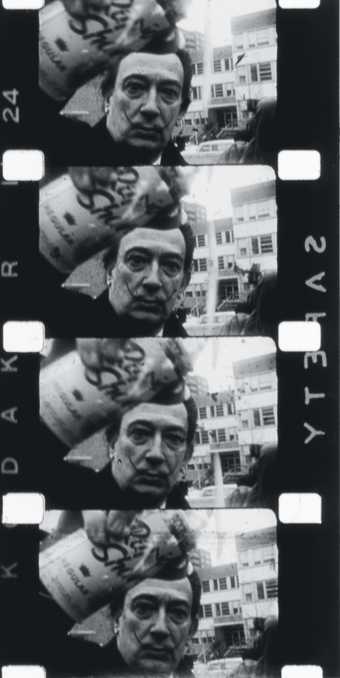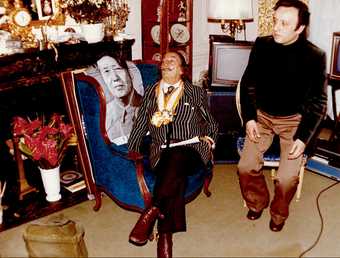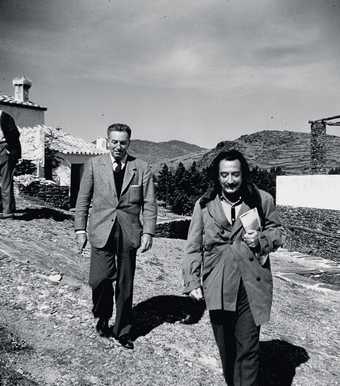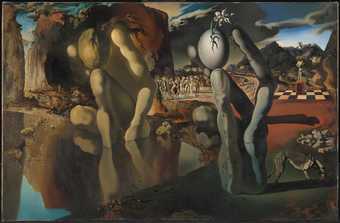My first contact with Salvador Dalí was during the New York premiere of Hans Richter’s film 8 x 8, which took place at the Museum of Modern Art as a benefit for Film Culture magazine. I think it was in 1957. He had to introduce the film, but instead sent a very funny letter in usual Dalí language, which was a mix of Spanish, French, English and a few others. I actually met him in person in 1962 at my loft, which was also a Filmmakers’ Co-operative’s office and a very busy place – a meeting ground for avant-garde experimental filmmakers, poets and musicians, where they projected their work and exchanged ideas.
One day Dalí came along with Ultra Violet and joined the crowd. He got interested in underground cinema (this was the term we used at the time) and in what we were doing, so I showed him some films. He was especially interested in Stan VanDerBeek. At the same time he decided he wanted to do some happenings/performances himself. He had met Peter Beard, who became a sort of manager of these semi-happenings, and I was asked to film a good number of them. Mostly they involved spraying young beautiful women with shaving foam – a key ingredient for Dalí – in the studios, and sometimes in open spaces. I also participated in some improvised meal sessions, which were slightly grotesque, and in performances such as wrapping a woman with ropes and then unwrapping her. Dalí had a sincere interest in doing these semi-happenings. They were a little bit staged, a little artificial and not too original, I have to say, but he felt he had to do them.

Film stills of Salvador Dalí spraying foam in a happening filmed by Peter Beard 1964
Courtesy Benn Northover, Jonas Mekas
The performances were never done on stage, but in studios and private homes, such as Jerome Hill’s house by the East River. They were unpublicised. There were never more than ten people, with Beard inviting some and Dalí suggesting others. Beard was always with the Vogue magazine fashion crowd, so he provided willing models. He also brought in Taylor Mead as an assistant, and I introduced Jack Smith to Dalí. He was obsessed with Maria Montez, the Mexican actress, and wanted to meet her daughter, who was staying at Salvador’s place.
We are talking about 1962–3, when the golden age of the happening theatre was already practically over. Nobody else took Dalí’s happenings too seriously. There was nothing new in them. He was following others, and that is how he ended up in my loft – it attracted artists at the beginning of the 1960s who went on to define the decade. He always had young people, especially women, around him. I was asking myself the question: why was he doing these performances? If you look at Claes Oldenburg, Allan Kaprow or Al Hansen’s work, they have more spontaneity and freshness. Dalí’s didn’t have the same energy, but maybe by doing it he came closer to understanding what others were doing.
As a person Dalí was very friendly, at least to me and the others at those happenings. He was always in a good mood, joking, and was always something of a performer. I also visited him at the hotel where he was staying – he was always a performer in real life too. Maybe this is why some people didn’t take him seriously. I think that if he had remained in Spain and not strayed so far from his roots, he may not have become such a clown. That is my theory, but I don’t know how he was when he was 25; maybe he was the same.
I should add that he was very strict as far as ethics, morality and relationships were concerned. He was almost puritanical. When I was arrested for showing Flaming Creatures, I needed letters of support for my court case, which I eventually lost and had to serve a six-month sentence. He wrote one in which he stated that he supported me and sympathised, but was completely against total permissiveness, and thought that certain things should be kept private and the public shouldn’t be exposed to everything.




